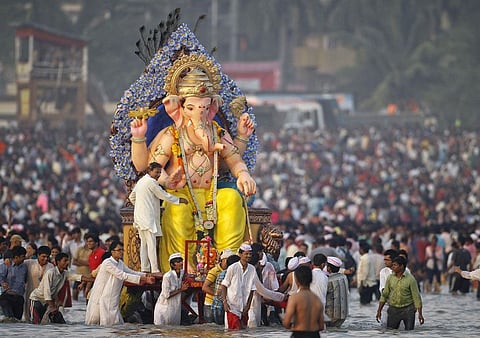The other way is self-evident in the very name with which the idols are referred- 'Murti'. Murti literally means form, manifestation, embodiment, or simply an abode. Hence, idol is not simply a symbol, but it is a place that can hold the energy and the essence of the particular manifestation of Brahman. That is, the idol is nothing but a body of the Devata. It is for this reason, the worship of the Devata begins with Prana Pratishtapana where in the life-force, the essence, as well as the form of the deity is infused into the stone or wooden idol. This is done through procedures like Kumbabhishekam etc. in the temples. In fact, without consecration, the stone idol remains simply a stone and does not become a Pratima (image) of God.






